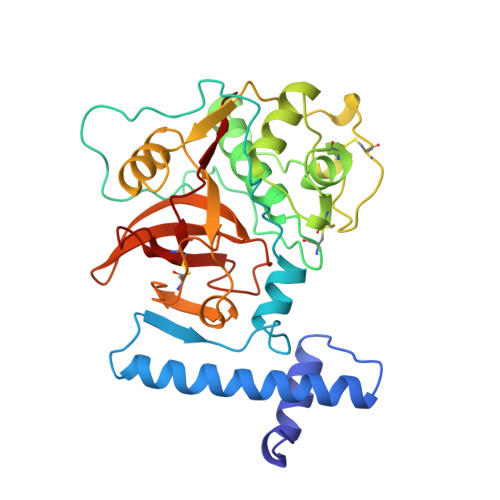Crystal structure of wild-type human procathepsin K.
Sivaraman, J., Lalumiere, M., Menard, R., Cygler, M.(1999) Protein Sci 8: 283-290
- PubMed: 10048321
- DOI: https://doi.org/10.1110/ps.8.2.283
- Primary Citation of Related Structures:
7PCK - PubMed Abstract:
Cathepsin K is a lysosomal cysteine protease belonging to the papain superfamily. It has been implicated as a major mediator of osteoclastic bone resorption. Wild-type human procathepsin K has been crystallized in a glycosylated and a deglycosylated form. The latter crystals diffract better, to 3.2 A resolution, and contain four molecules in the asymmetric unit. The structure was solved by molecular replacement and refined to an R-factor of 0.194. The N-terminal fragment of the proregion forms a globular domain while the C-terminal segment is extended and shows substantial flexibility. The proregion interacts with the enzyme along the substrate binding groove and along the proregion binding loop (residues Ser138-Asn156). It binds to the active site in the opposite direction to that of natural substrates. The overall binding mode of the proregion to cathepsin K is similar to that observed in cathepsin L, caricain, and cathepsin B, but there are local differences that likely contribute to the specificity of these proregions for their cognate enzymes. The main observed difference is in the position of the short helix alpha3p (67p-75p), which occupies the S' subsites. As in the other proenzymes, the proregion utilizes the S2 subsite for anchoring by placing a leucine side chain there, according to the specificity of cathepsin K toward its substrate.
Organizational Affiliation:
Biotechnology Research Institute, National Research Council of Canada, Montréal, Québec.














